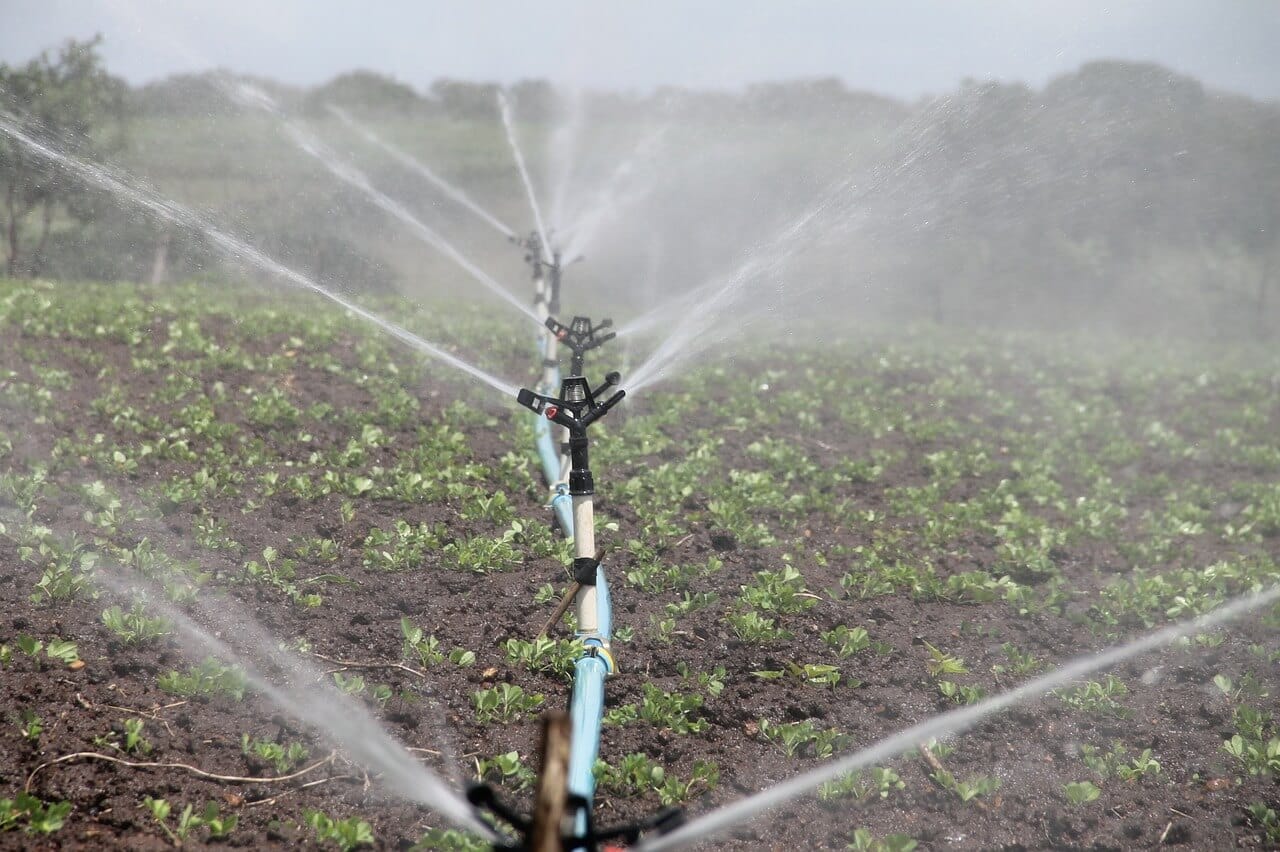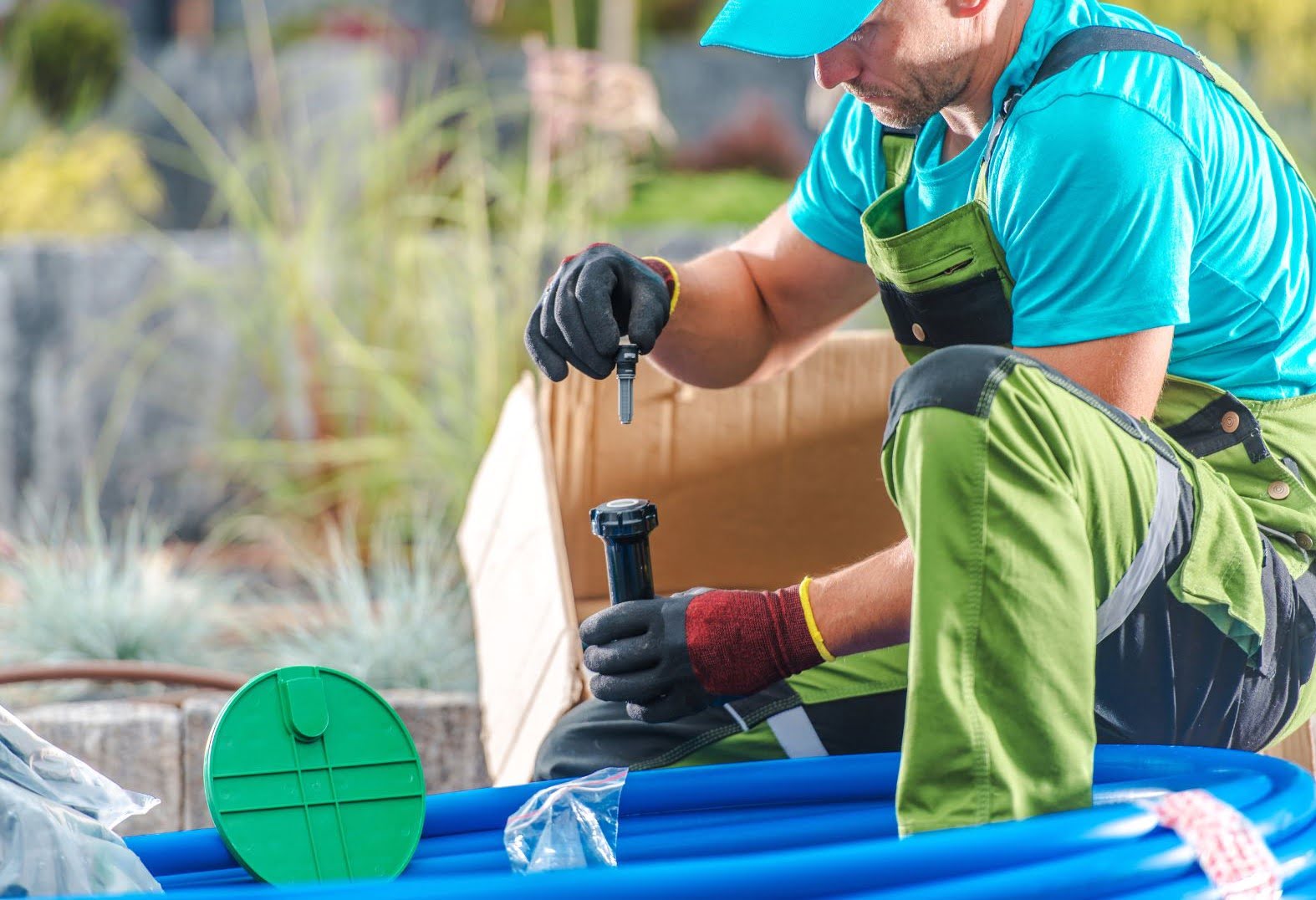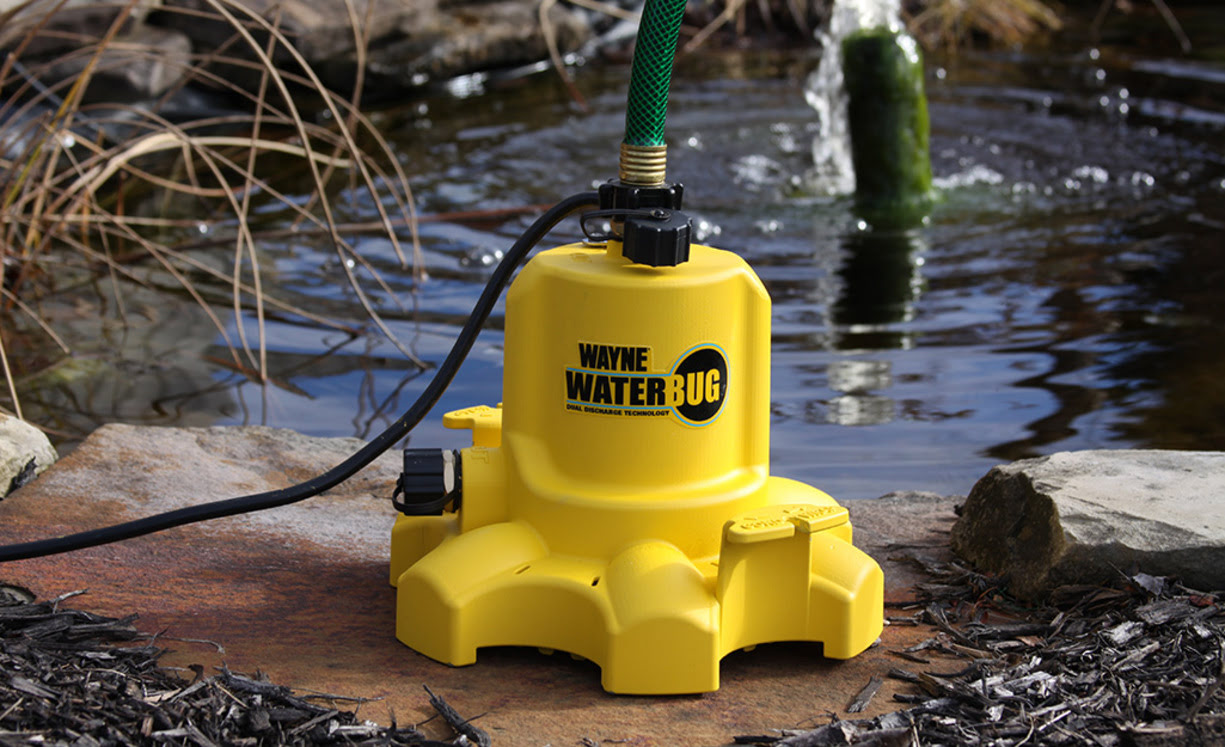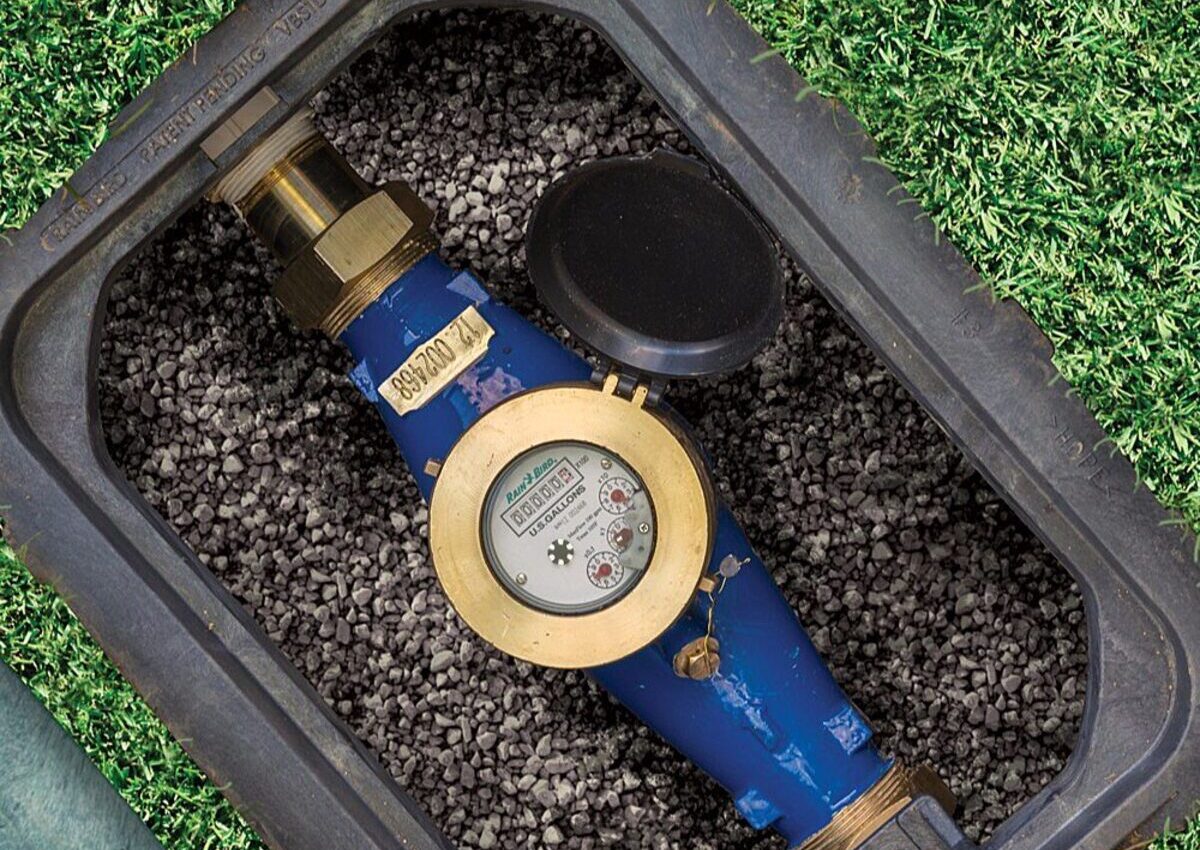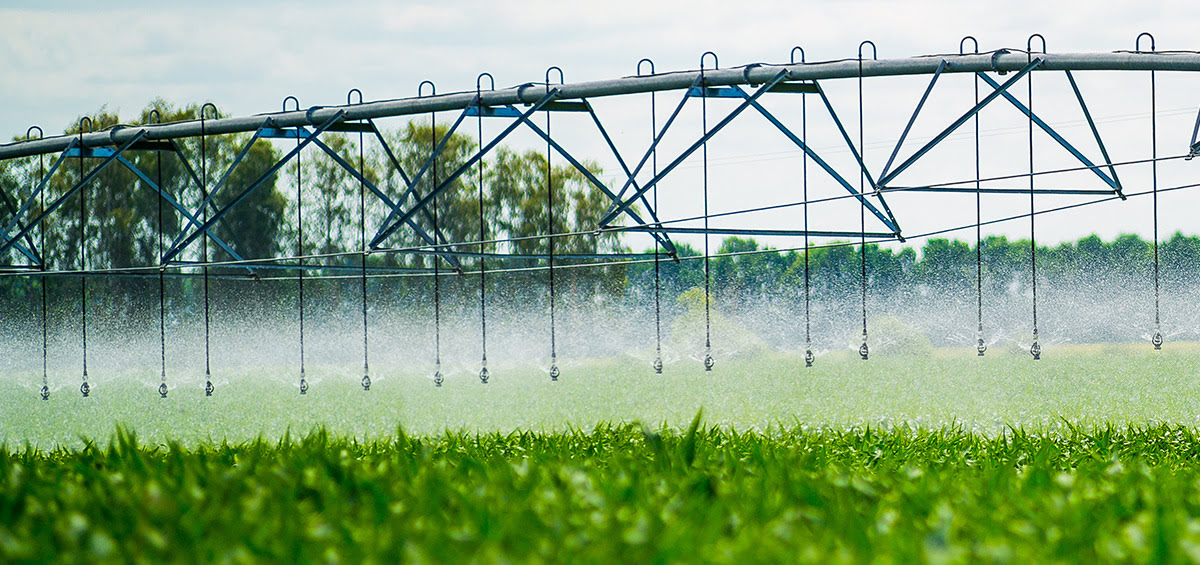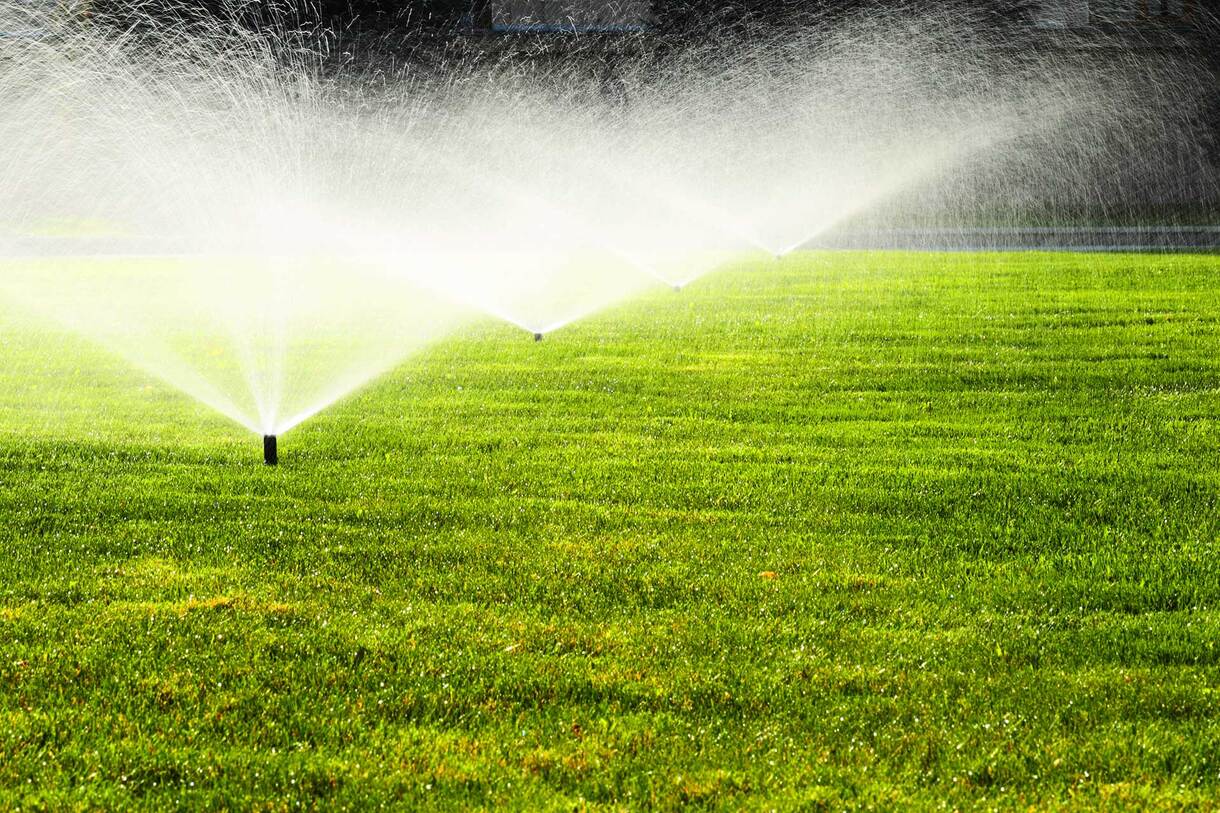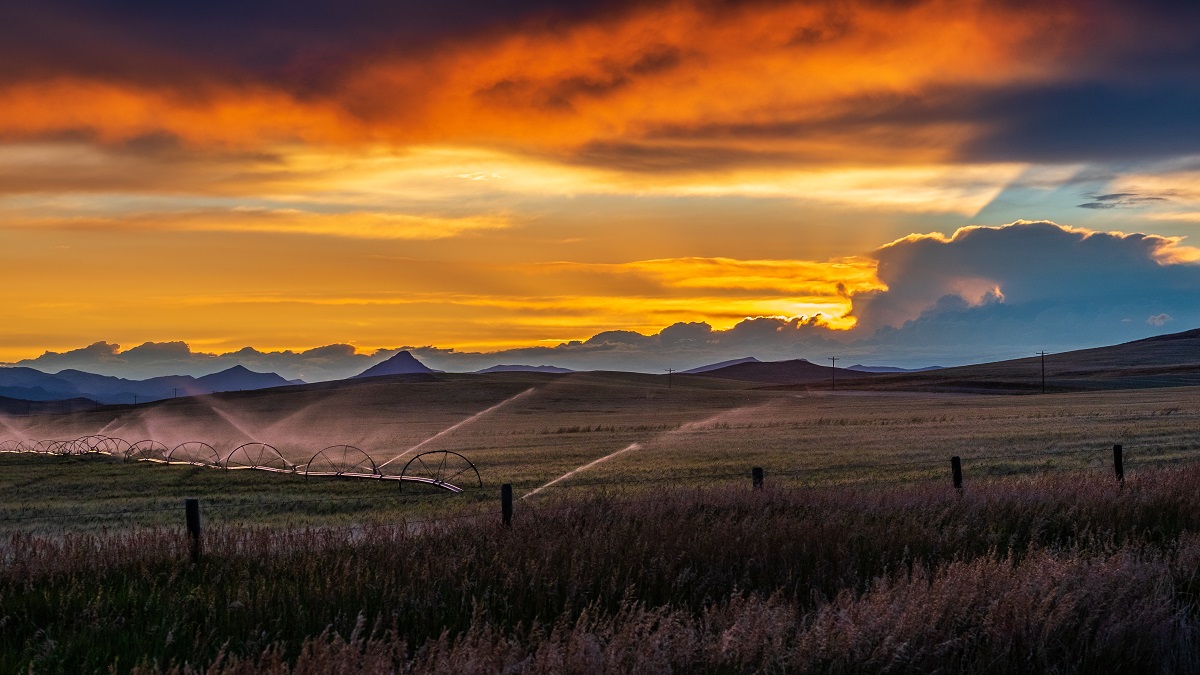Home>Gardening Basics>Tools and Equipment>What Is Irrigation Backflow
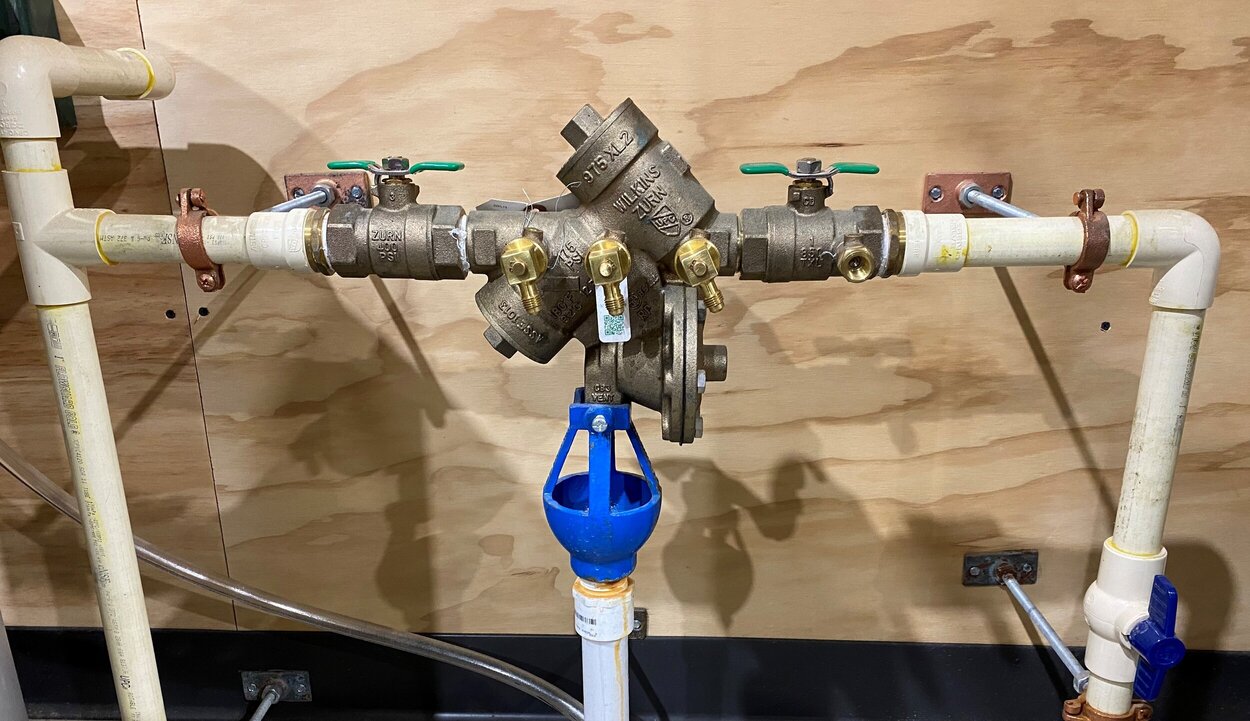

Tools and Equipment
What Is Irrigation Backflow
Modified: January 22, 2024
Discover the importance of irrigation backflow prevention and how tools and equipment can help ensure a safe and efficient water supply.
(Many of the links in this article redirect to a specific reviewed product. Your purchase of these products through affiliate links helps to generate commission for Chicagolandgardening.com, at no extra cost. Learn more)
Table of Contents
- Introduction
- Understanding Backflow
- Importance of Backflow Prevention in Irrigation
- Types of Backflow Prevention Devices
- How Backflow Occurs in Irrigation Systems
- Potential Risks of Irrigation Backflow
- Legal Regulations and Codes for Backflow Prevention
- Testing and Maintenance of Backflow Prevention Devices
- Conclusion
Introduction
Welcome to the world of irrigation backflow! If you are a homeowner or a professional involved in the irrigation industry, understanding backflow is crucial for maintaining a safe and efficient irrigation system. Backflow occurs when water flows in the opposite direction than intended, potentially contaminating the water supply with harmful substances or pathogens. In this article, we will delve into the concept of backflow and its significance in irrigation systems.
When you think of irrigation, you may picture lush green lawns or vibrant gardens. However, behind the scenes, there is a complex network of pipes, valves, and fittings that make it all possible. The purpose of irrigation is to deliver water to plants efficiently and evenly, promoting their growth and health. However, without proper precautions, this process can also pose risks to public health and water quality.
Backflow prevention is a crucial aspect of irrigation design and maintenance. It involves the use of specialized devices and measures to prevent contaminated water from flowing back into the main water supply. Given the potential dangers associated with backflow, it is essential to be aware of its causes, prevention methods, and legal requirements to ensure the safety of both people and the environment.
This article aims to provide you with a comprehensive understanding of irrigation backflow and its implications. We will explore the different types of backflow prevention devices commonly used in irrigation systems, the potential risks posed by backflow, the legal regulations and codes governing backflow prevention, and the importance of regular testing and maintenance. By the end of this article, you will be well-equipped with the knowledge to ensure the safe and effective operation of your irrigation system.
Understanding Backflow
Before delving into the importance of backflow prevention in irrigation, it is important to understand what backflow actually is. Backflow occurs when the flow of water in a plumbing system reverses its direction, causing water to flow back towards the water supply instead of flowing away from it.
This reversal of water flow can happen due to various factors, such as a sudden drop in water pressure, a fluctuation in water demand, or a back-siphonage effect. Back-siphonage occurs when there is a negative pressure in the plumbing system, drawing water back into the supply lines.
When backflow occurs, there is a risk of contaminating the potable water supply with non-potable water or other substances. For example, if a garden hose is left submerged in a bucket of fertilizer or pesticide, and backflow occurs, those chemicals can be introduced into the drinking water supply.
Backflow can also happen when there is a cross-connection between the potable water supply and a source of contamination. A cross-connection is a connection between a potable water system and a non-potable water source, such as a sprinkler system or an irrigation system.
Understanding the causes and potential risks of backflow is crucial for implementing effective backflow prevention measures. By recognizing the factors that can lead to backflow, proper backflow prevention devices and practices can be put in place to safeguard the water supply and protect public health.
Importance of Backflow Prevention in Irrigation
Backflow prevention is of utmost importance in irrigation systems to ensure the safety and quality of the water supply. Without proper backflow prevention measures, there is a risk of contaminants and pollutants entering the potable water system, posing serious health hazards to both humans and the environment.
One of the primary reasons for the importance of backflow prevention in irrigation is to protect the public health. Irrigation systems often use fertilizers, pesticides, and other chemicals to promote plant growth and protect against pests and diseases. If a backflow event occurs, these chemicals can flow back into the main water supply, resulting in potential contamination.
Contamination of the water supply can lead to various health risks, including gastrointestinal illnesses, respiratory problems, and even long-term health issues. Vulnerable populations, such as children, the elderly, and those with compromised immune systems, are particularly at risk. Preventing backflow in irrigation systems helps to safeguard the health and well-being of the community.
In addition to public health concerns, backflow prevention also plays a crucial role in protecting the environment. When contaminants from irrigation systems flow into natural water bodies, such as rivers or lakes, they can harm aquatic life and disrupt the delicate balance of ecosystems. By preventing backflow, we can preserve the integrity of our natural resources and support a sustainable environment.
Furthermore, backflow prevention in irrigation systems ensures the efficiency and effectiveness of the irrigation process itself. Contaminants in the water can clog sprinkler heads, drip emitters, and other irrigation components, reducing their performance and lifespan. This can lead to inefficient water usage, increased maintenance costs, and decreased crop yields.
By implementing proper backflow prevention measures, irrigation systems can operate at their optimal level, delivering water precisely where it is needed without interruption or contamination. This not only improves the efficiency and effectiveness of irrigation but also contributes to water conservation and sustainable agricultural practices.
Overall, the importance of backflow prevention in irrigation cannot be overstated. It is crucial for protecting public health, preserving the environment, and ensuring the efficiency of irrigation systems. By understanding the potential risks and implementing appropriate preventive measures, we can maintain a safe and reliable water supply for both current and future generations.
Types of Backflow Prevention Devices
There are several types of backflow prevention devices that are commonly used in irrigation systems to prevent the reversal of water flow and protect the water supply from contamination. These devices are designed to create a physical barrier and prevent non-potable water or contaminants from entering the potable water system. Let’s explore some of the most common types:
- Air Gap: An air gap is the most effective and reliable form of backflow prevention. It is a physical separation between the water supply outlet and the potential source of contamination. By creating a visible gap, air prevents any backflow from reaching the potable water supply. Air gap devices are commonly used in irrigation systems where the risk of contamination is high.
- Double Check Valve Assembly (DCVA): A DCVA consists of two check valves separated by a pressure-relief valve. The check valves allow water to flow in one direction only, while the pressure-relief valve releases excess pressure to prevent a buildup. DCVAs are commonly used in medium-risk applications where there is a potential for moderate contamination.
- Pressure Vacuum Breaker (PVB): A PVB uses a spring-loaded check valve and an air inlet valve to prevent backflow. The check valve closes when water flow stops, while the air inlet valve opens to allow air into the system, breaking the siphoning effect. PVBs are suitable for low to medium-risk applications and are cost-effective options for backflow prevention.
- Reduced Pressure Zone Assembly (RPZ): An RPZ is a more advanced backflow prevention device consisting of two independently operated check valves and a differential pressure relief valve. The check valves work in tandem to prevent backflow, while the relief valve releases any excess pressure between the valves. RPZs are commonly used in high-risk applications where the potential for severe contamination is present.
- Atmospheric Vacuum Breaker (AVB): An AVB relies on atmospheric pressure to prevent backflow. When water flow stops, the air inlet valve opens, allowing air to enter the system and preventing a negative pressure that could draw water back into the supply. AVBs are typically used in low-risk applications, such as residential irrigation systems.
The type of backflow prevention device required for an irrigation system depends on the level of risk and the specific regulations or codes in place. Consulting with a professional and ensuring compliance with local laws is essential when selecting and installing backflow prevention devices in irrigation systems.
How Backflow Occurs in Irrigation Systems
Understanding how backflow occurs in irrigation systems is essential for implementing effective backflow prevention measures. Backflow can happen due to various factors and mechanisms, including changes in water pressure, cross-connections, and back-siphonage. Let’s explore these different ways in which backflow can occur:
- Changes in Water Pressure: Backflow can occur when there is a significant drop in water pressure in the system. This can happen during a water main break, a fire hydrant being opened nearby, or when multiple users simultaneously draw water from the system. The reduced pressure can cause a reversal in the water flow direction, allowing non-potable water or contaminants to enter the main water supply.
- Cross-Connections: A cross-connection is a connection between the potable water supply and a source of contamination. In irrigation systems, cross-connections can occur when there is a direct connection between the potable water system and a non-potable water source, such as a sprinkler system or an irrigation system. If backflow occurs, contaminants from the irrigation water can flow into the potable water supply, leading to potential contamination.
- Back-Siphonage: Back-siphonage occurs when there is a negative pressure in the plumbing system, drawing water back into the supply lines. This negative pressure can be caused by events such as a sudden drop in water pressure, a break in a nearby water main, or when a large volume of water is rapidly withdrawn from the system, creating a vacuum effect. Back-siphonage can lead to the backflow of non-potable water or contaminants into the potable water supply.
It is important to note that different types of backflow prevention devices are designed to address specific mechanisms of backflow. For example, an air gap device creates a physical barrier between the water supply and potential sources of contamination, effectively preventing both back-siphonage and back-pressure conditions. On the other hand, check valves in devices like DCVAs and RPZs prevent backflow by allowing water to flow in one direction only, addressing back-pressure conditions.
By understanding how backflow can occur in irrigation systems, appropriate backflow prevention devices and practices can be implemented to mitigate the risks. Regular inspection and maintenance of the irrigation system, along with proper installation of backflow prevention devices, are crucial to ensure the effectiveness of backflow prevention and the safety of the water supply.
Potential Risks of Irrigation Backflow
Irrigation backflow poses several potential risks to public health, the environment, and the efficiency of the irrigation system itself. Understanding these risks is essential for implementing effective backflow prevention measures and safeguarding the water supply. Let’s explore some of the key risks associated with irrigation backflow:
- Contamination of the Water Supply: One of the most significant risks of irrigation backflow is the potential contamination of the potable water supply. When non-potable water or pollutants flow back into the main water supply, it can introduce harmful substances, such as fertilizers, pesticides, and chemicals, into the drinking water system. This contamination can pose serious health risks to consumers if ingested or used for purposes like cooking or personal hygiene.
- Spread of Waterborne Diseases: Backflow events can introduce pathogens and bacteria into the water supply, leading to the spread of waterborne diseases such as E. coli, Salmonella, or Legionella. These diseases can cause severe gastrointestinal illnesses, respiratory infections, and other health issues, particularly in vulnerable populations. Preventing irrigation backflow is crucial to maintaining a safe and healthy water supply.
- Damage to the Environment: Backflow can also have negative impacts on the environment. Contaminated water from irrigation systems that flows into natural water bodies can harm aquatic life and disrupt ecosystems. Excessive amounts of fertilizers or chemicals can lead to eutrophication, oxygen depletion, and the growth of harmful algal blooms. By preventing backflow, we can protect our natural water resources and maintain a sustainable environment.
- Reduced Efficiency of Irrigation Systems: Backflow can clog sprinkler heads, drip emitters, and other irrigation components, reducing the efficiency and effectiveness of the irrigation system. Contaminants in the water can also cause blockages or damage to pipes, valves, and fittings. This can result in uneven water distribution, reduced irrigation coverage, increased maintenance costs, and decreased crop yields. Preventing backflow helps to ensure the proper functioning of the irrigation system and optimize water usage.
To mitigate these risks, it is crucial to implement effective backflow prevention measures in irrigation systems. This includes selecting and installing appropriate backflow prevention devices, conducting regular inspections and maintenance, and ensuring compliance with local regulations and codes. By prioritizing backflow prevention, we can protect public health, preserve the environment, and maintain the efficiency and effectiveness of our irrigation systems.
Legal Regulations and Codes for Backflow Prevention
To ensure the safety and integrity of the water supply, various legal regulations and codes have been established for backflow prevention. These regulations outline the responsibilities of property owners, plumbing professionals, and irrigation system operators in implementing proper backflow prevention measures. Understanding and complying with these regulations is crucial to prevent backflow and protect public health. Here are some key aspects of legal regulations and codes for backflow prevention:
- Plumbing Codes and Standards: Many regions have specific plumbing codes and standards that require the installation of backflow prevention devices in certain types of properties. These codes define the types of backflow prevention devices that should be used based on the level of risk and the specific application. Plumbing professionals and contractors must comply with these codes to ensure the proper installation and maintenance of backflow prevention devices.
- Regular Inspections and Testing: Legal regulations often stipulate that backflow prevention devices must be regularly inspected and tested to ensure their proper functioning. Qualified individuals, such as certified backflow prevention assembly testers, are responsible for conducting these inspections and tests. The frequency of inspections and testing may vary depending on the type of backflow prevention device and the level of risk associated with the property.
- Record-Keeping and Reporting: Property owners and irrigation system operators are typically required to maintain records of backflow prevention device installations, inspections, and test results. These records may need to be submitted to regulatory authorities upon request. Proper record-keeping helps ensure accountability and allows for tracking the compliance and maintenance history of backflow prevention systems.
- Cross-Connection Control Programs: Many municipalities and water utilities have implemented cross-connection control programs to manage and prevent backflow. These programs involve assessments of potential cross-connections, education and training for property owners and professionals, and the implementation of backflow prevention measures. Compliance with these programs is essential to prevent contamination and safeguard the water supply.
It is important for property owners, plumbing professionals, and irrigation system operators to familiarize themselves with the specific legal regulations and codes in their region. Consulting with local authorities or certified experts in backflow prevention can provide guidance on compliance requirements and help ensure the effective implementation of backflow prevention measures.
Testing and Maintenance of Backflow Prevention Devices
Regular testing and maintenance of backflow prevention devices are crucial to ensure their proper functioning and to prevent backflow in irrigation systems. Performing routine checks and inspections can identify any issues or defects that might compromise the effectiveness of the devices. Let’s explore the importance of testing and maintenance for backflow prevention:
1. Testing: Backflow prevention devices, such as double check valve assemblies (DCVAs), pressure vacuum breakers (PVBs), or reduced pressure zone assemblies (RPZs), must undergo periodic testing to ensure they are operating correctly. Qualified professionals, such as certified testers, should perform these tests. The testing verifies that the devices are properly preventing backflow and complying with local regulations and codes.
2. Inspection: Regular inspections should be conducted to check for any physical damage or wear and tear on the backflow prevention devices. Inspectors will verify that the devices are properly installed, maintained, and protected from potential contaminants. Visual inspections can also identify any signs of backflow, such as discoloration or foul odors in the water.
3. Maintenance: Backflow prevention devices require regular maintenance to ensure their continued effectiveness. This includes cleaning, lubricating, and replacing worn or damaged parts. The maintenance activities should follow manufacturer guidelines and be performed by professionals with expertise in backflow prevention. Proper maintenance helps prolong the lifespan of the devices and ensures their optimal performance.
4. Testing Frequency: The frequency of testing for backflow prevention devices depends on local regulations and the type of device installed. Generally, high-risk devices, such as RPZs, require annual testing, while medium-risk devices, such as PVBs or DCVAs, may require testing every two to three years. Low-risk devices, such as atmospheric vacuum breakers (AVBs), may have longer testing intervals. Consult with local authorities or certified professionals to determine the appropriate testing schedule for your location.
5. Record-Keeping: It is important to maintain detailed records of all testing and maintenance activities performed on the backflow prevention devices. These records demonstrate compliance with regulations and codes, provide a maintenance history, and help track any trends or patterns of issues that may arise. Proper record-keeping also facilitates communication with regulatory authorities and provides proof of the system’s compliance during inspections.
By prioritizing regular testing and maintenance of backflow prevention devices, irrigation system operators can ensure the continued effectiveness of their systems in preventing backflow. This helps protect the water supply from contamination and maintain the health and safety of the community.
Conclusion
Understanding and implementing backflow prevention measures in irrigation systems is vital to safeguard the water supply, protect public health, and promote efficient irrigation practices. By grasping the concept of backflow and the potential risks it poses, we can take the necessary steps to prevent backflow and ensure the integrity of our water systems.
We have explored the various types of backflow prevention devices commonly used in irrigation, such as air gaps, double check valve assemblies (DCVAs), pressure vacuum breakers (PVBs), reduced pressure zone assemblies (RPZs), and atmospheric vacuum breakers (AVBs). Each device serves a specific purpose and is selected based on the level of risk and the requirements of the irrigation system.
We have also discussed the importance of backflow prevention in irrigation, emphasizing the need to protect public health, preserve the environment, and maintain the efficiency of the irrigation system. By implementing proper backflow prevention measures, we can prevent contamination, the spread of waterborne diseases, and damage to the environment while maximizing water conservation and crop yields.
Legal regulations and codes play a crucial role in guiding the implementation and compliance of backflow prevention measures. From plumbing codes and standards to cross-connection control programs, these regulations ensure that property owners, plumbing professionals, and irrigation system operators adhere to the necessary protocols and protocols.
Regular testing, inspection, and maintenance of backflow prevention devices are essential to confirm their proper functioning and prevent the occurrence of backflow. Ensuring the devices are in optimal condition helps to protect the water supply and maintain the efficiency of the irrigation system.
In conclusion, by understanding the risks of irrigation backflow, complying with legal regulations, and implementing regular testing and maintenance, we can create a safer and more sustainable irrigation system. Prioritizing backflow prevention not only protects public health and the environment but also promotes the efficient use of water resources for a healthier and greener future.
